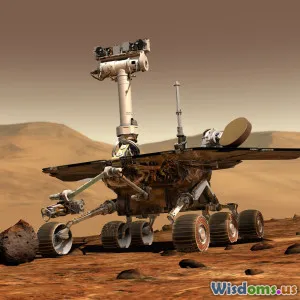
Life on Other Planets: What We Know
6 min read Exploring the possibilities of extraterrestrial life and what current science tells us about life beyond Earth. (0 Reviews)
Life on Other Planets: What We Know
The quest to understand life beyond Earth has captivated humans for centuries. From ancient philosophers pondering the existence of other worlds to modern scientists using advanced technology to explore the cosmos, the search for extraterrestrial life is a fundamental aspect of astronomy and astrobiology. In this article, we will explore what we currently know about life on other planets, the criteria that define potential habitability, and the ongoing missions that could answer one of humanity's oldest questions: Are we alone in the universe?
The Search for Extraterrestrial Life
The Building Blocks of Life
Life as we know it is carbon-based and requires water, a stable environment, and various chemical elements such as nitrogen, phosphorus, and sulfur. For scientists, the search for extraterrestrial life often begins with identifying planets that possess these essential ingredients. The discovery of exoplanets—planets outside our solar system—has expanded the possibilities for where life might exist.
Key Criteria for Habitability
Astrobiologists have developed several criteria to assess a planet's potential to support life:
- Location in the Habitable Zone: This is the region around a star where conditions might be just right for liquid water to exist. For example, Mars and some of Jupiter's moons, like Europa, are considered to be within their respective habitable zones.
- Atmospheric Conditions: A planet must have an atmosphere that can provide essential gases (like oxygen for complex life) and protect potential life forms from harmful space radiation.
- Stable Climate: A planet's climate must be stable over long periods to allow life to evolve.
Notable Discoveries
Mars
Mars has been a prime candidate in the search for extraterrestrial life. Evidence of ancient riverbeds and minerals that typically form in water suggests that liquid water may have existed on its surface in the past. The recent Perseverance rover mission aims to collect soil samples that could provide further insights into Mars' potential for past microbial life.
Europa and Enceladus
Jupiter's moon Europa and Saturn's moon Enceladus have subsurface oceans beneath their icy crusts, making them intriguing targets for astrobiological exploration. Both moons exhibit geysers that eject water vapor, indicating the possible presence of microbial life in their oceans.
Exoplanets
The Kepler Space Telescope has identified thousands of exoplanets, many of which reside in their stars' habitable zones. The discovery of Earth-sized planets with conditions potentially suitable for life has sparked excitement in the scientific community. The James Webb Space Telescope, launched in December 2021, is expected to provide deeper insights into the atmospheres of these distant worlds, searching for biosignatures that could indicate life.
The Role of Technology in the Search for Life
Advancements in technology have greatly enhanced our ability to search for extraterrestrial life. Telescopes equipped with high-resolution imaging and spectroscopy allow scientists to analyze light from distant planets, revealing the chemical composition of their atmospheres. Robotic missions and landers equipped with sophisticated instruments are now capable of conducting experiments on other planetary bodies, searching for signs of life.
The Fermi Paradox
Despite the vastness of the universe and the billions of stars that likely host habitable planets, we have yet to find definitive evidence of extraterrestrial life. This dilemma is often referred to as the Fermi Paradox: If the universe is so ripe for life, where is everyone? Various theories have been proposed, ranging from the idea that intelligent life is exceedingly rare to the possibility that advanced civilizations self-destruct before achieving interstellar communication.
Conclusion
The search for life on other planets is a dynamic and evolving field that combines elements of astronomy, biology, and planetary science. As technology advances and our understanding of the cosmos deepens, we may soon find answers to the profound question of whether we are alone in the universe. While we have not yet discovered definitive evidence of extraterrestrial life, the ongoing exploration of our solar system and beyond opens up exciting possibilities for the future.
As we continue to explore the stars, our curiosity fuels scientific inquiry, bringing us closer to understanding our place in the universe and the potential for life beyond Earth.
Rate the Post
User Reviews
Popular Posts





















